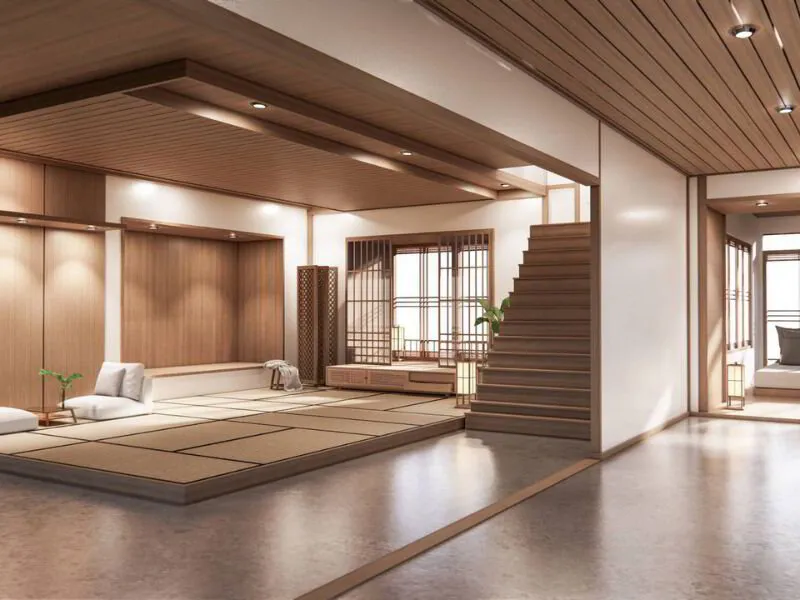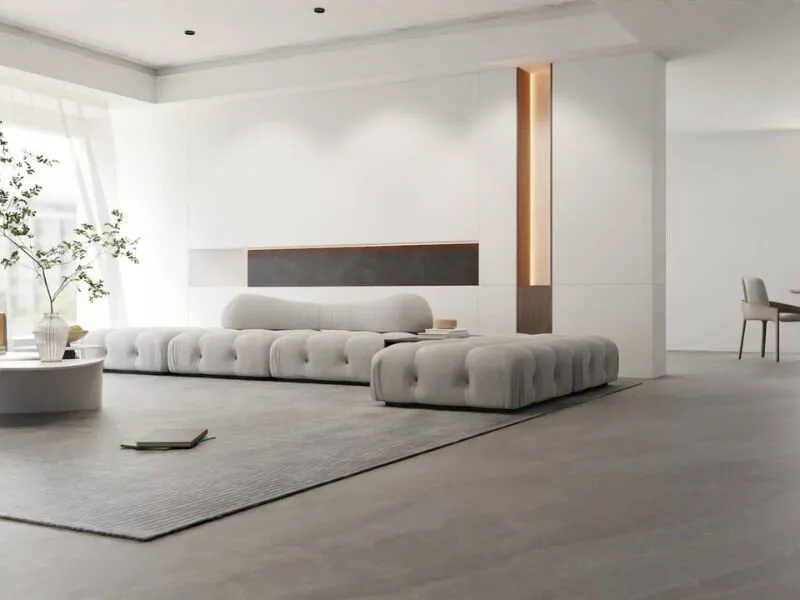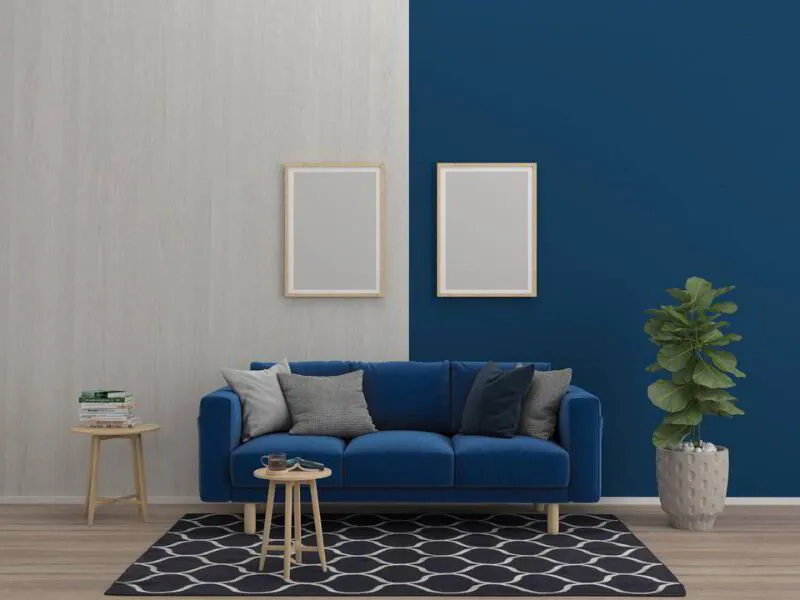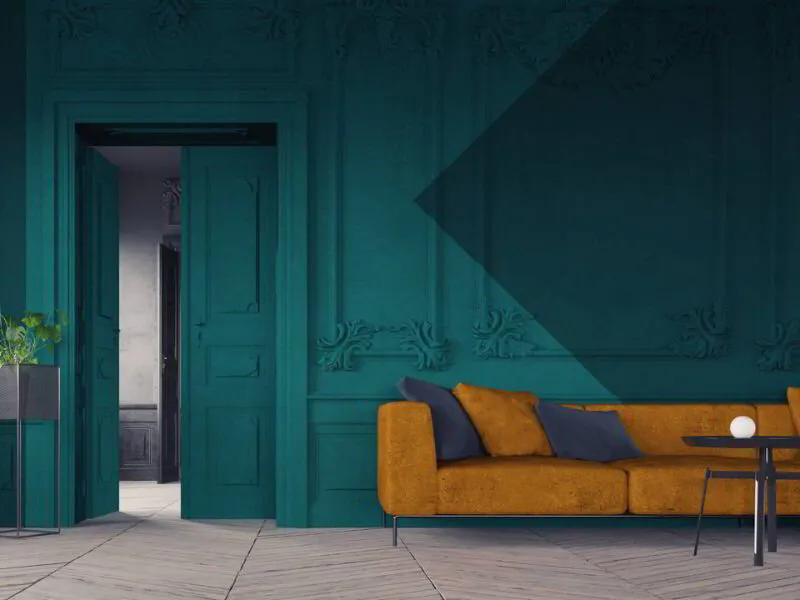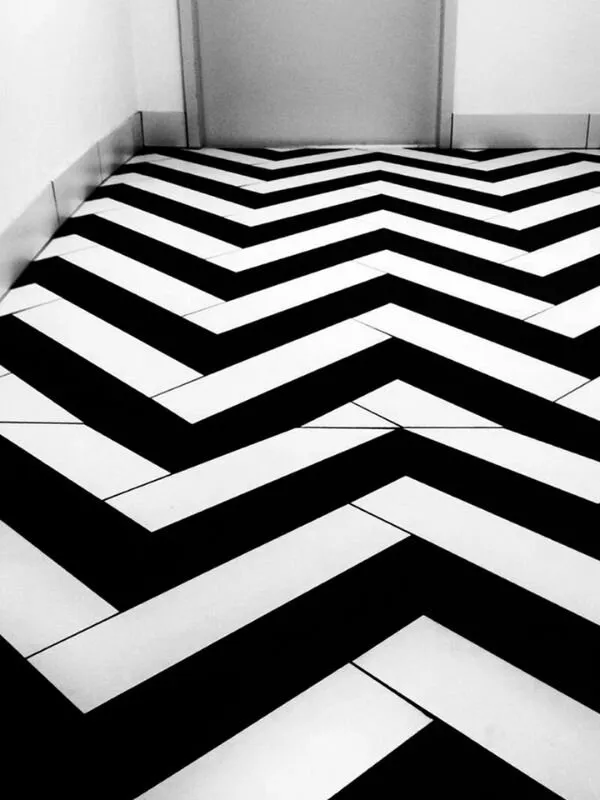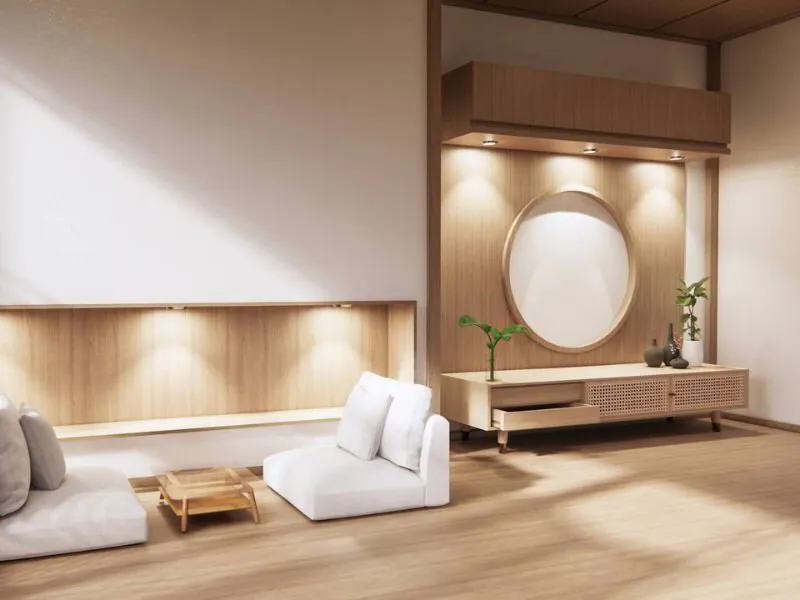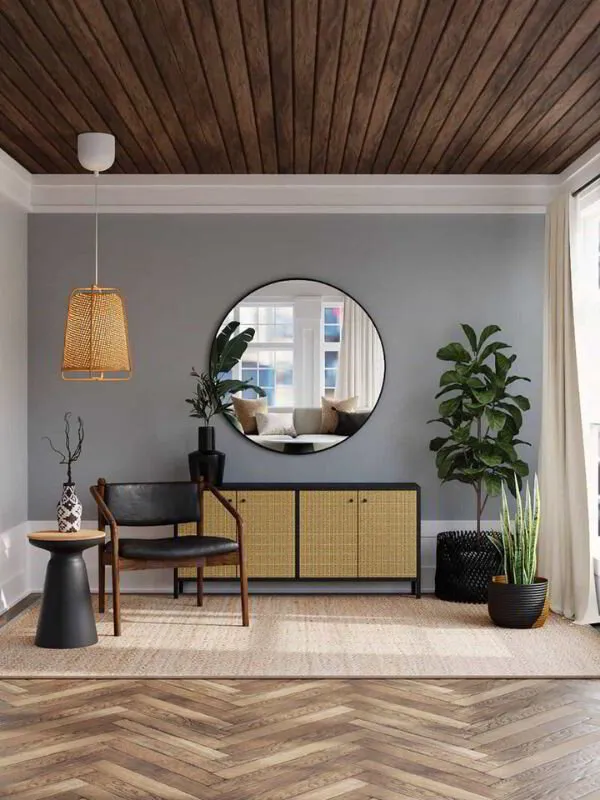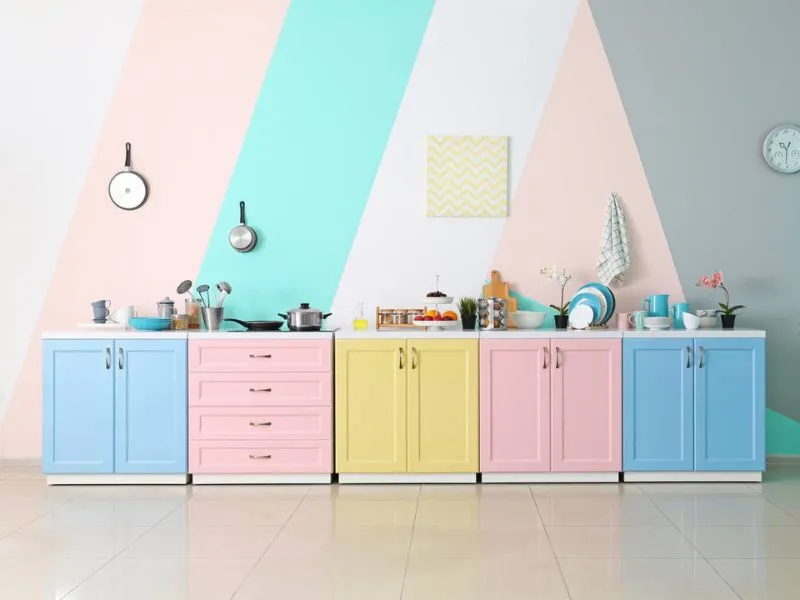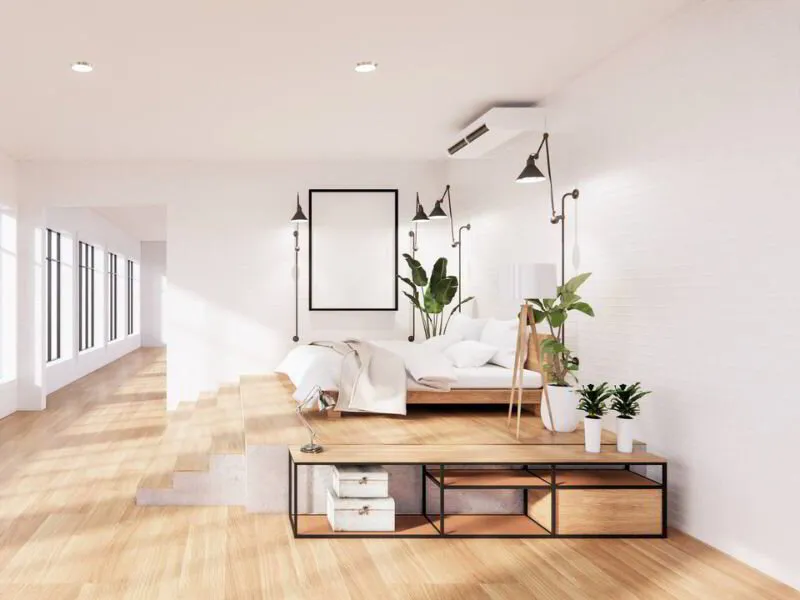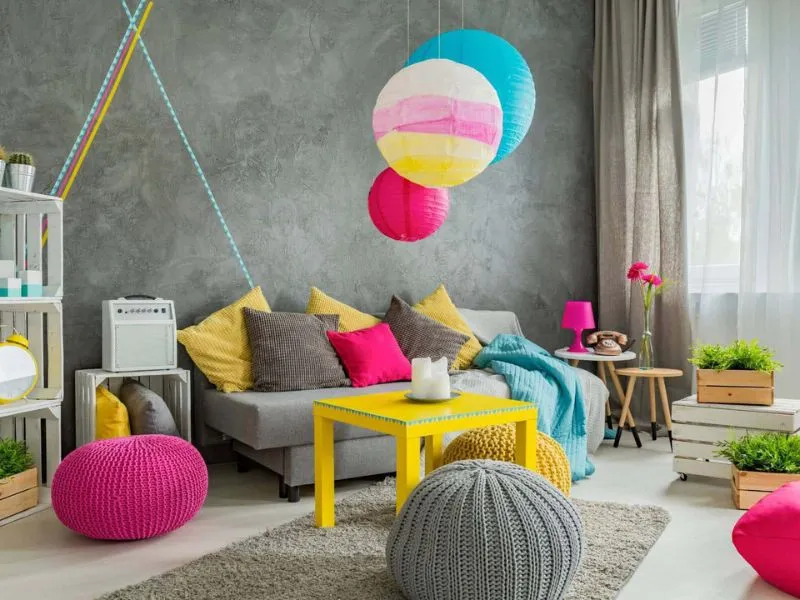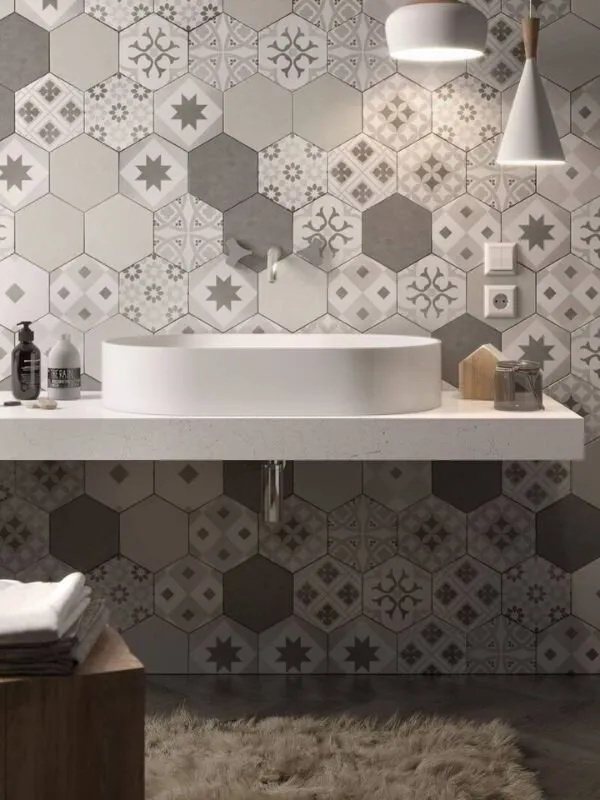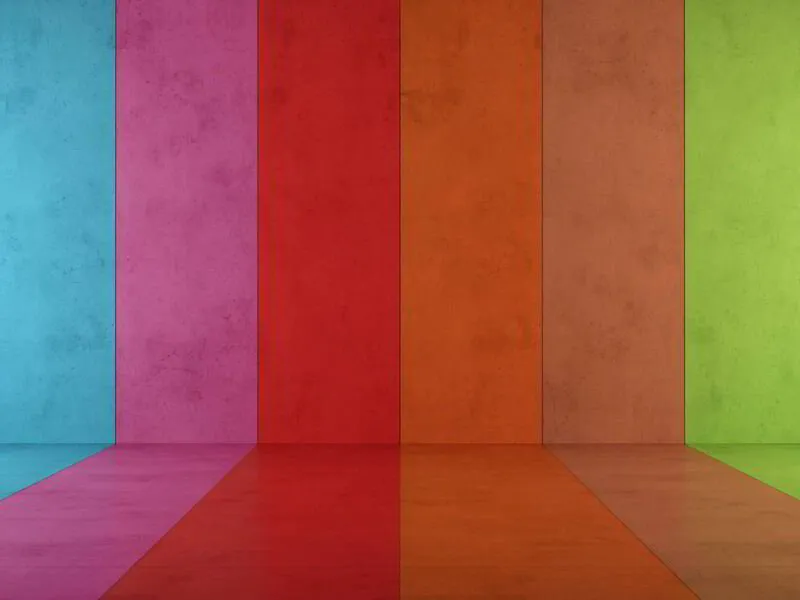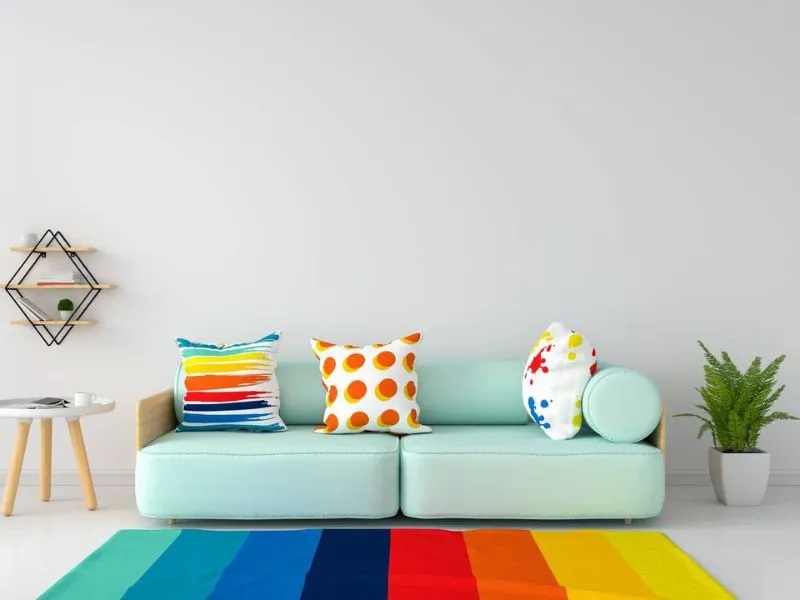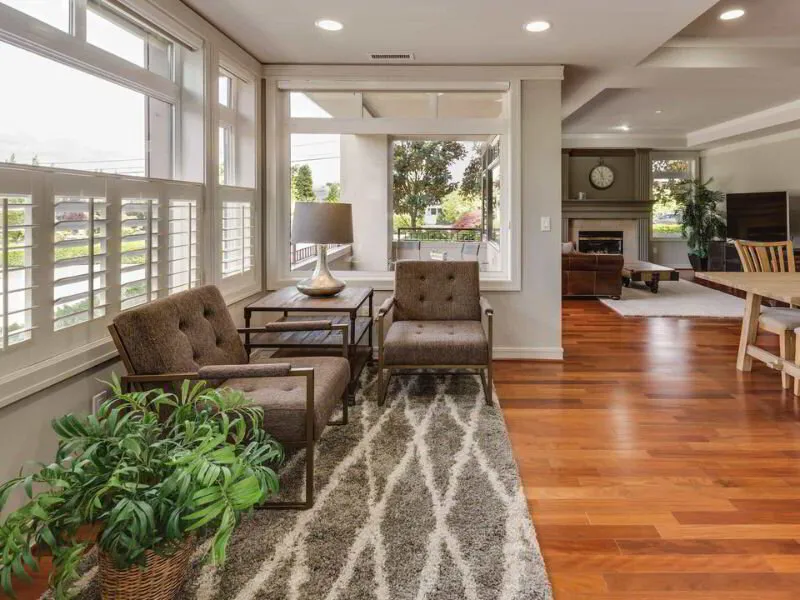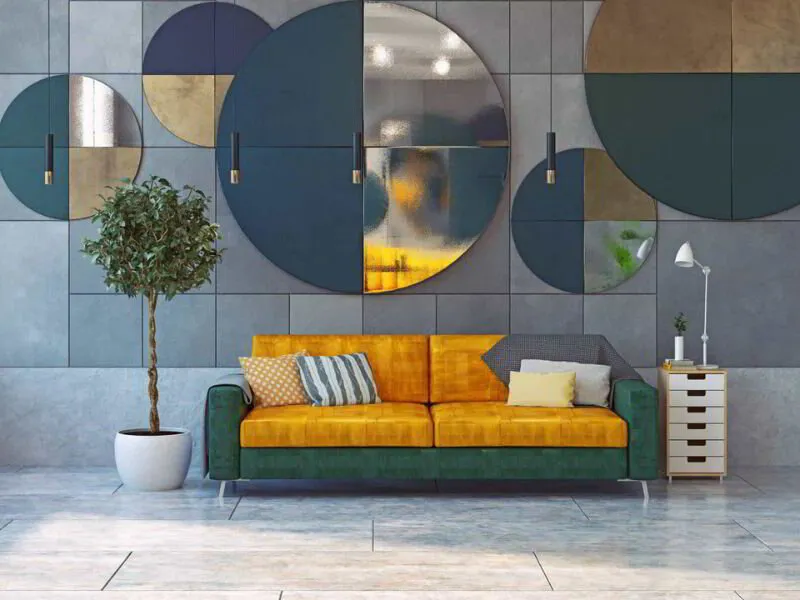Do you feel stuck in a design rut for your home? Not sure where to start when it comes to redesigning? Well, we have good news – interior design isn’t as intimidating as it looks! All it takes is focus and an understanding of basic concepts.
In this post, we’ll dive into the power of line in interior design to help you unlock your imaginative side and create something unique and special for your home.
So, if lines excite you or perhaps baffle you, buckle up because this ultimate guide for interior designers will provide all the tips and tricks for creating beautiful interiors with a dash of drama using nothing but line!
📘 Key Takeaways
- Line as a design element: Understanding and applying the concept of line in your interior design can create movement, define spaces, and guide the eye throughout a room.
- Types of lines: There are seven types of lines - straight, horizontal, vertical, diagonal, zig-zag, circular, and curved - each with its unique impact on a space.
- Manipulating visual space: Lines can be used to visually expand or contract a space, making it an effective tool for maximizing small areas or creating distinct zones within a room.
- Creating mood and patterns: Using lines thoughtfully in your design can add color, create captivating patterns, and set a specific mood, such as softness or playfulness.
- Lines in furniture and architecture: Not just limited to decor, lines in furniture and architectural features also contribute significantly to the overall design aesthetic.
What is Line in Interior Design?
Line in interior design is an essential element that's used to create a sense of flow and movement throughout a space.
Lines can define spaces, add a visual focus, and lead the eye from one point to another.
They can be expressed through architectural elements such as walls, doorways, windows, furniture placement, and artwork.
Line forms the backbone of interior design, created from straight, vertical, horizontal, diagonal, and curved details.
Space, texture, form, color, light, and pattern are additional elements that must be carefully balanced to create a successful design scheme.
Line provides shape and volume to the room and is an essential element for any arranged room or piece of artwork.
The 7 Types of Lines In Interior Design
Lines come in seven distinct forms.
Each of these lines has unique properties which can be used to define spaces, add a visual focus and lead the eye from one point to another.
By combining different types of lines in your interior design, you can achieve a cohesive look that reflects your personal style.
1. Straight Lines
Straight lines are the simplest type of line in interior design and can create structure and order within a space. Horizontal lines can be used to signify rest and relaxation, while vertical lines can add a sense of height and grandeur.
Straight lines can also provide a visual focus and lead the eye from one particular focal point to another. They are particularly effective when combined with other lines, such as curved or zig-zag lines, to create a rhythm within a room.
2. Horizontal Lines
Horizontal lines are a type of straight line that can create a sense of serenity and repose in a space.
When incorporated into the design, horizontal lines emphasize relaxation, stability, and balance.
Alternatively, they can lead the eye from one side of the room to another by creating a visual path.
Horizontal lines also provide a base level upon which other features, such as furniture or artwork, can be built upon.
3. Vertical Lines
Vertical lines are another type of straight line that can add height and grandeur to a space.
When used to divide a room, vertical lines can create a sense of harmony and flow between different areas.
At the same time, they can provide a practical eye-level focal point, drawing attention upward and making small spaces appear larger.
Vertical lines also provide a sense of continuity and movement when combined with other features, such as artwork or furniture.
4. Diagonal Lines
Diagonal lines are a type of straight line that can introduce energy and dynamism into a space.
They create an illusion of movement, which helps break up the monotony of static elements.
The effect is enhanced when the lines lead the eye toward a certain focal point, creating an effective transition between different areas.
Additionally, diagonal lines can add visual interest to a room by contrasting with vertical and horizontal lines.
5. Zig-Zag Lines
Zigzag lines are a type of curved line that can add interest and energy to a space.
As the name implies, they create an alternating pattern of angles and points with alternating directions, introducing a sense of movement.
This can lead the eye along a visual plane or draw attention to some aspects of the room.
Additionally, zigzag lines create visual repetition that adds texture and complexity while allowing a sense of balance and flow between different sections.
6. Circular Lines
Circular lines are curved lines that create a sense of harmony and elegance in a room.
They have a softer, more flowing effect than diagonal or zigzag lines and create the illusion of sound waves traveling through the space.
Additionally, circles can provide an effective transition between different areas, help to frame focal points, or act as gentle framing around furniture pieces.
The repetition of circular shapes can also add visual interest and complexity without making the room feel disjointed.
7. Curved Lines
Curved lines are a type of line that can be used to create a sense of comfort and harmony in a space.
Unlike angular or straight lines, they introduce a sense of flow and movement that can bring energy to the room while still providing an air of elegance.
Furthermore, curved lines can add visual interest without overwhelming the viewer – their gentle curves allow your eye to travel seamlessly between different parts of the room, creating harmony and balance.
Additionally, curved lines can help draw focus to important features in the space by leading the eye along its path.
The Impact of Lines In Interior Design
Lines are a versatile and powerful tool in interior design, bringing with them the potential to drastically alter the atmosphere of a room.
Lines can unify different elements of a room’s design, creating a sense of flow that ties the space together as a cohesive unit.
Lines can also draw attention to certain features or points of focus while providing visual cues that help people move fluidly through the space without thinking about it.
Using line placement effectively in a room’s design makes it possible to create an intriguing atmosphere that draws people in and keeps them entertained.
Lines can also add texture and movement to any space, making it more exciting and captivating than before.
The Role of Lines in Interior Design
Contemporary style in interior design is predominantly characterized by the use of shapes, structure, and lines.
Standard components and intense hues come together to create a distinct look.
Classical design style, however, is typically associated with rich color palettes, curves, premium textures, and dark wood.
Though both styles differ greatly in terms of visuals, they have one thing in common: soft and rounded lines.
Contemporary designs emphasize space over things, while classical designs honor the item itself.
This can be seen as a new age definition of aesthetics in interior design, where line has come to bear the primary role.
When decorating or redecorating a living space, composition is key for creating a homely feel and an artistic masterpiece.
Not only do patterns play an essential part in this respect, but it’s also important to consider how items are placed within those patterns.
Straight and vertical lines exude elegance; curvaceous and diagonal lines offer dynamism; horizontal lines bring serenity - so consider blending different styles to achieve a satisfying design.
With careful attention given to patterning and placement of items alike, you’ll be sure to draw attention to all your hard work!
📘 Related Reading: The Impact of Pattern In Interior Design
How to Use Line in Interior Design?
The best design schemes will use lines in the following ways:
Line Placement to Manipulate the Visual Space
Line is a highly versatile element that can manipulate the space visually in various ways.
Horizontal lines, for example, give the illusion of expanding or lengthening a space, while vertical lines will have the opposite effect and make the area feel more compact.
Different lines, such as straight, curved, or diagonal lines, can add texture and energy to a room if used in conjunction with other elements within the design.
Using parallel curved lines such as chevrons will also reflect light up onto the ceiling, which helps brighten the room and draw attention away from any smaller areas.
With careful consideration and placement of lines, you can create visual cues that help to direct people’s eyes around the space, stretch or shorten it visually, and ultimately bring balance and harmony to your interior design scheme.
Crafting Stunning Visual Patterns
Lines can create visuals that draw the eye and produce stunning patterns.
Lines can emphasize certain features, create balance in a space, and add visual complexity.
For example, lines can be used to achieve symmetrical and asymmetrical shapes that are visually appealing.
Lines can also be combined with colors to form unique patterns for a room's walls or flooring.
With the right combination of line shape and color, designers can craft beautiful visual patterns that add subtle beauty to any interior space!
Unlocking the Potential of All Spaces
Using lines in interior design can help maximize tiny spaces and make large spaces more intimate.
Straight lines draw the eye in small spaces, helping to create an illusion of a larger area.
L-shaped or curved lines can also create dynamic visual effects that bring more life into the space.
In larger spaces, using lines to demarcate different areas can create more intimate settings and help break up the monotony of a vast area.
Lines can also be used for decorative purposes, such as creating interesting shapes or patterns that add character and charm to the space.
Crafting a Cozy and Fun Atmosphere
Using lines in interior design can create a mood of softness and playfulness.
Curved lines, as opposed to straight ones, help soften the look of an area and add an element of grace.
Playful patterns, such as polka dots or geometric shapes, can be created with line work for added visual interest.
Lines can also define different areas within a single space, creating a whimsical feel that encourages exploration and creativity.
Line can create textural elements like stripes or ripples in fabrics or paint finishes, which add visual depth and dimension to any space.
Creating Geometric Designs
You can use lines to create geometric designs that are eye-catching and modern.
When used in the right direction, straight lines can create patterns of rows or squares.
Intersecting lines can create triangles and diamonds, while curved lines can make circles or ovals.
Combining multiple shapes or geometric patterns creates complex dynamics which lend a sophisticated yet playful look to any space.
Lines can also be used to define different spaces within a single room.
For example, by creating angled walls or boundaries with furniture pieces, you can create visual boundaries that give the space a more cohesive look.
Adding Color with Painted Lines
Adding color with painted lines can be a great way to add dimension and interest to any space.
Straight or curved lines with different colors can bring visual texture and depth.
Alternating colors or a gradient effect can be achieved with thin vertical stripes that run across walls or ceilings.
Contrasting colors can also create a bold statement that attracts the eye and adds unique character to any room.
Painted lines can also be used creatively, such as tracing out a fun pattern on furniture or walls, creating an attention-grabbing focal point for anyone who enters the room.
Making Accent Pieces Pop with Dynamic Lines
Creating dynamic lines is a great way to make accent pieces pop.
Bold diagonal or curved lines can help draw the eye toward certain parts of the room and create an interesting look.
Alternating colors to highlight a piece of furniture or artwork can also be done using painted lines, giving the room an unmistakably unique feel.
Sculptures and other decorative items can also benefit from adding dynamic lines, making them stand out against the wall it was placed on and creating an eye-catching display.
Use Line to Form Zones
You can create lines to form distinct zones in a room, effectively building a sense of purpose and organization.
Horizontal or vertical lines can be used to separate areas of the room for various activities, such as a seating area, dining space, or even simply for aesthetic effect.
The lines don't have to be physical divisions either; furniture items or paintings on one side of the room can act as a visual barrier that helps create different zones.
Color schemes and lighting can also help emphasize this effect, making these zones more inviting and defined.
Add Vitality With a Mix of Lines
Adding vitality to a room doesn't always have to involve bold colors or dramatic accents.
Adding a mix of lines can create contrast and interest while keeping the overall look simple and subtle.
Lines drawn in different directions and widths can introduce visual movement that catches the eye without being too overwhelming.
Softly curved lines can be used as an alternative to straight lines, as these organic shapes add energy without overstimulating the space.
When creating a line-based design scheme, consider how color or texture impacts the overall effect of your design.
Soft hues may add calming vibes, while bright colors bring more life into the room.
Final Thoughts on Line In Interior Design
Line in interior design is a powerful tool that can be used to create all sorts of looks in your home.
It can add interest, drama, and even a sense of tranquility.
We hope you enjoyed this exploration of line in interior design and that you feel inspired to experiment with it in your own home.
Thanks for reading, and feel free to check out our other articles on Interior Design!
Lara Harding
Lara is a supporting author @ DIY Home Comfort. She's an experienced interior designer and decorator and a full-time mom. You can find out more about her here.


